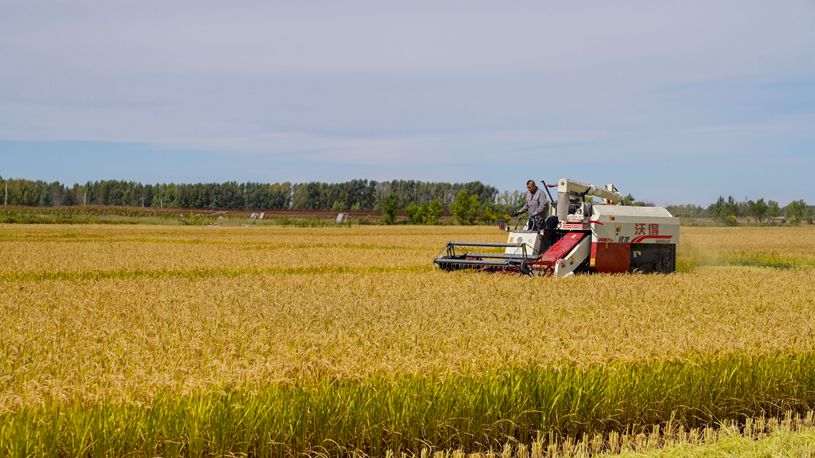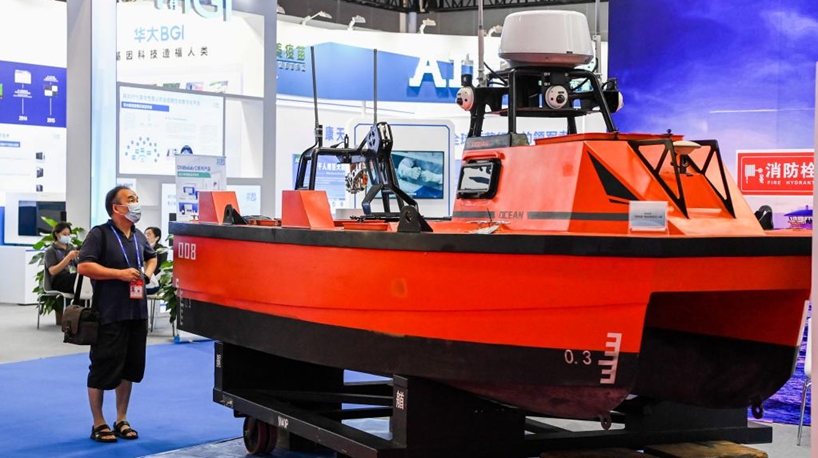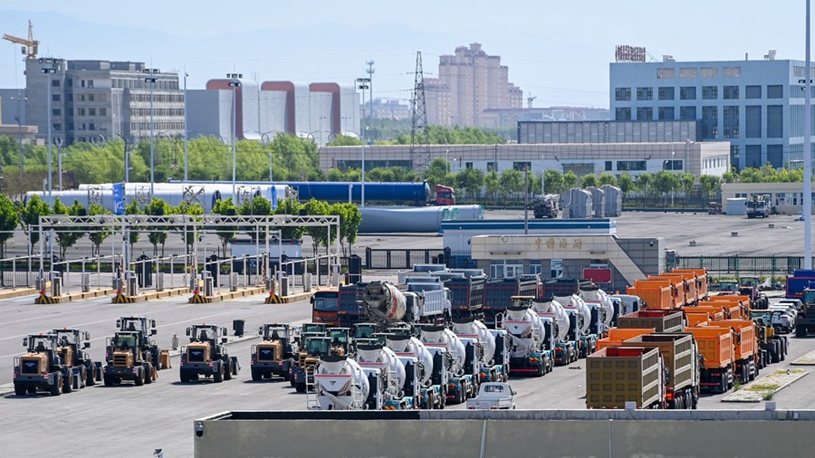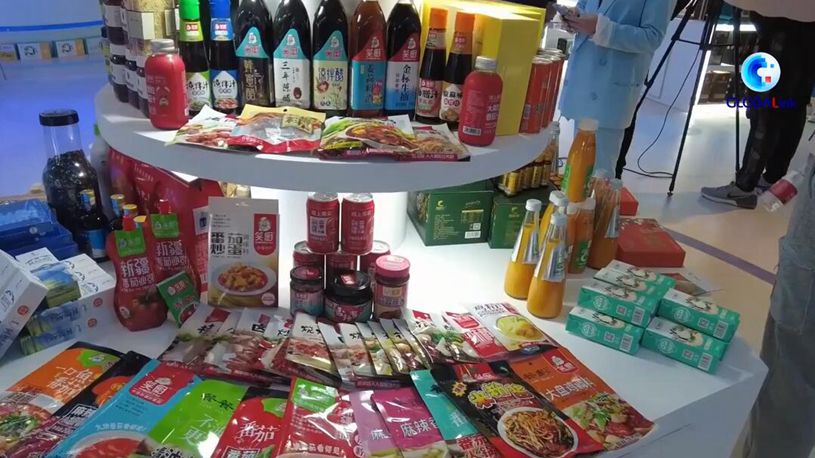BEIJING, Sept. 22 (Xinhua) -- How is the Chinese economy going? Data captured by domestic satellites offer a clue.
Sectors closely related to investment, consumption, and exports in China are making steady progress with strong vitality despite the impact of the COVID-19 epidemic in the spring of 2022, Xinhua's Space News Lab finds via data from satellite remote sensing, satellite positioning and navigation, and satellite communication transmission.
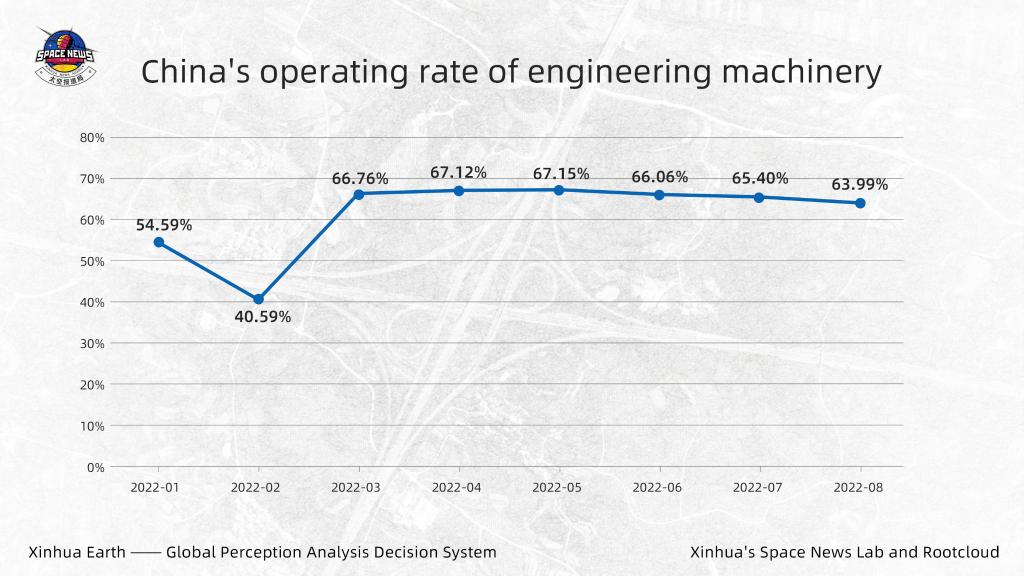
The satellite positioning and navigation system can provide key data, including the daily operating rate and volume of 740,000 engineering machines, for the analysis of the country's infrastructure investment mainly in major projects. The machinery covers concrete equipment, excavators, hoisting and piling equipment, and equipment used in road and port construction.
Since March 2022, the operating rate of the mentioned machinery and equipment in China has remained at around 65 percent. Affected by the high summer temperatures and the outbreak of COVID-19 in some cities, the operating rate edged down in August.
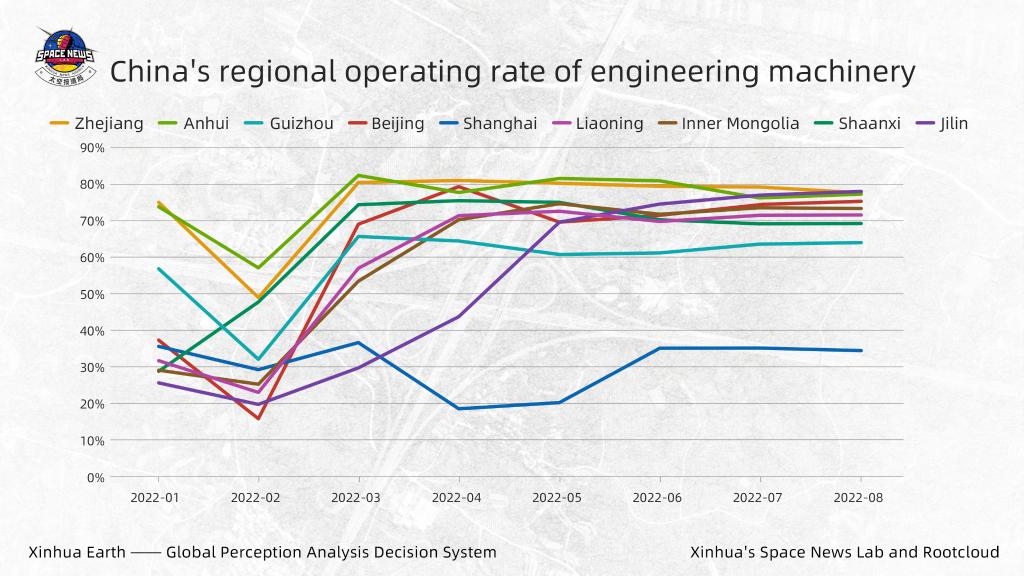
Data showed that in the first half of the year (H1), the operating rate of engineering machinery in Shanghai, Beijing and other regions dropped amid the epidemic impact. Since June, the data of these regions have become relatively stable.
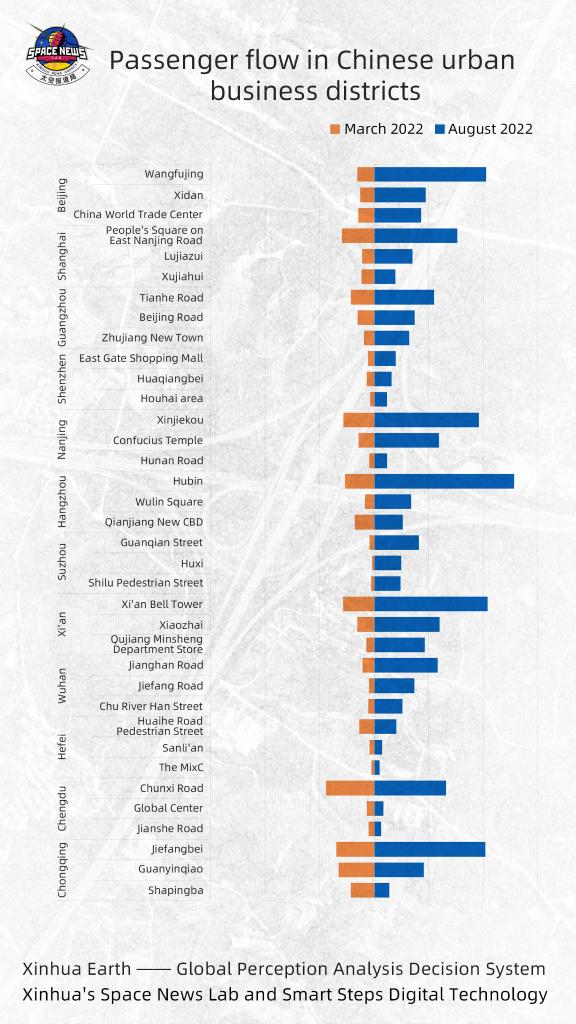
The mobile signal data from 36 business districts of 12 economically advanced cities in China showed that by August, the flow of people in business districts was much more active than that in March despite the sporadic COVID-19 resurgences in H1.
Mobile signal data provide a more accurate observation of shopping mall foot traffic than using satellite remote sensing to observe the changes in the number of vehicles in the parking lots of Chinese shopping malls, as parking facilities in these areas are mostly underground.
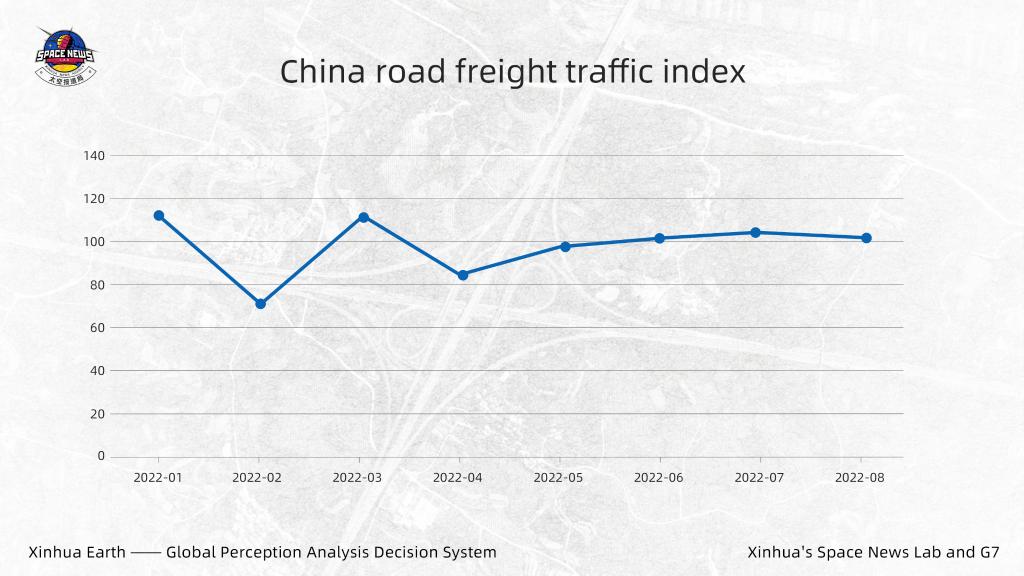
The satellite positioning and navigation system can track the operation of more than 3 million heavy trucks mainly across the country's trunk roads, covering the material flow for both consumption and production. The China road freight traffic index based on this system showed that the country's road freight transport reached a post-Spring Festival low in April 2022 and then began to rally.
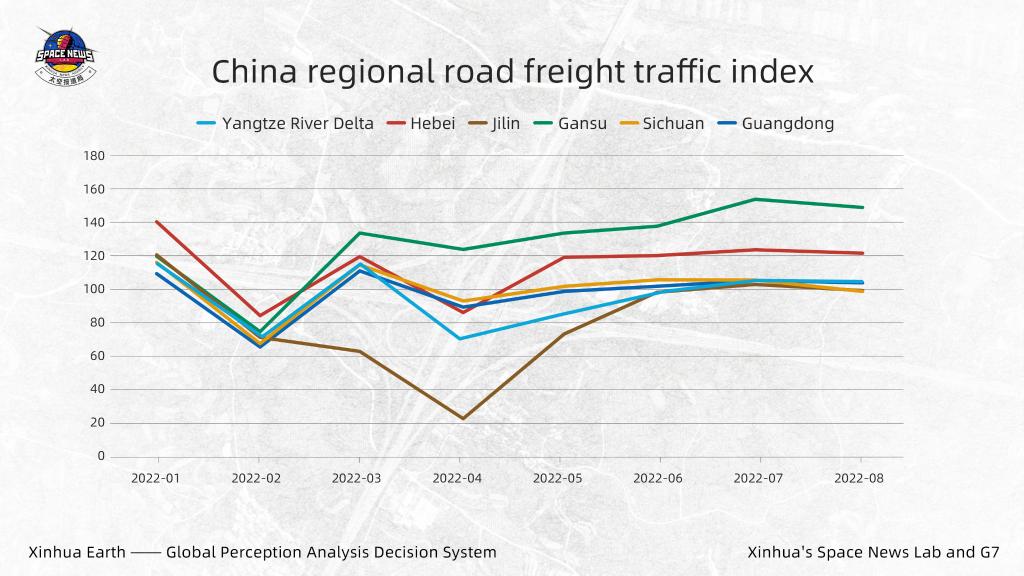
After a severe COVID-19 outbreak hit Shanghai in April, road freight activities in multiple places dropped significantly, reflecting the significance of the Yangtze River Delta to China's overall economy.
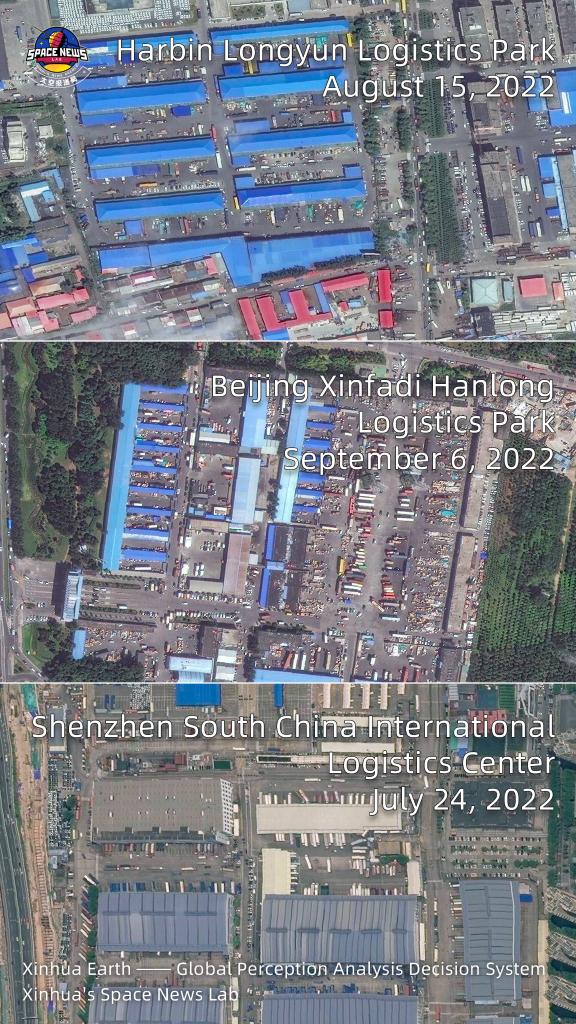
Satellite remote sensing observation on freight logistics centers in multiple places show goods piled up and normal vehicular traffic in these centers.
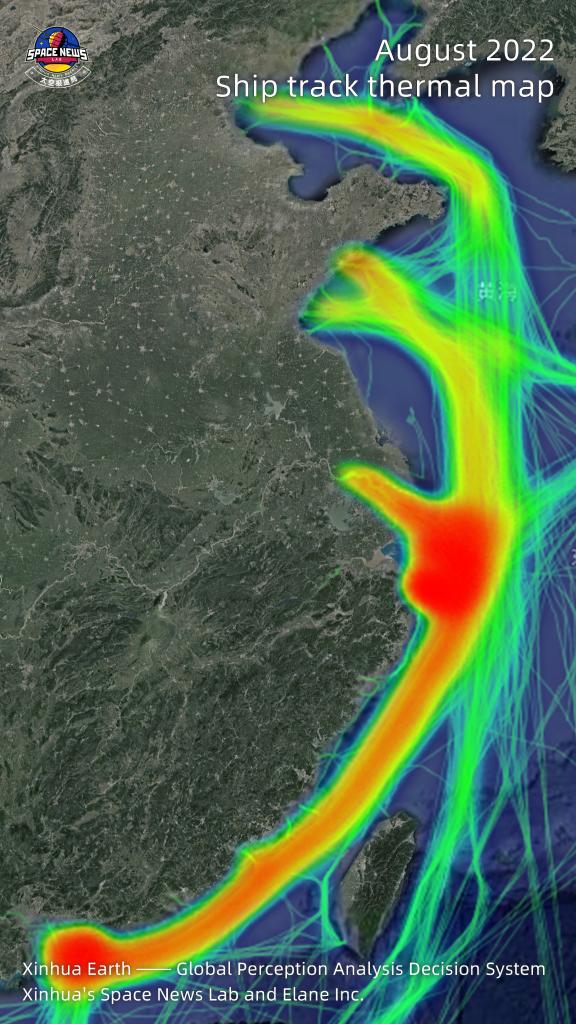
The map shows trails of cargo ships of more than 100,000 tonnes along China's eastern coast. Since the Spring Festival of 2022, the number of container ships departing from Chinese ports has remained at a high level, similar to that in 2021, reflecting the economy's vitality and close ties with the rest of the world.
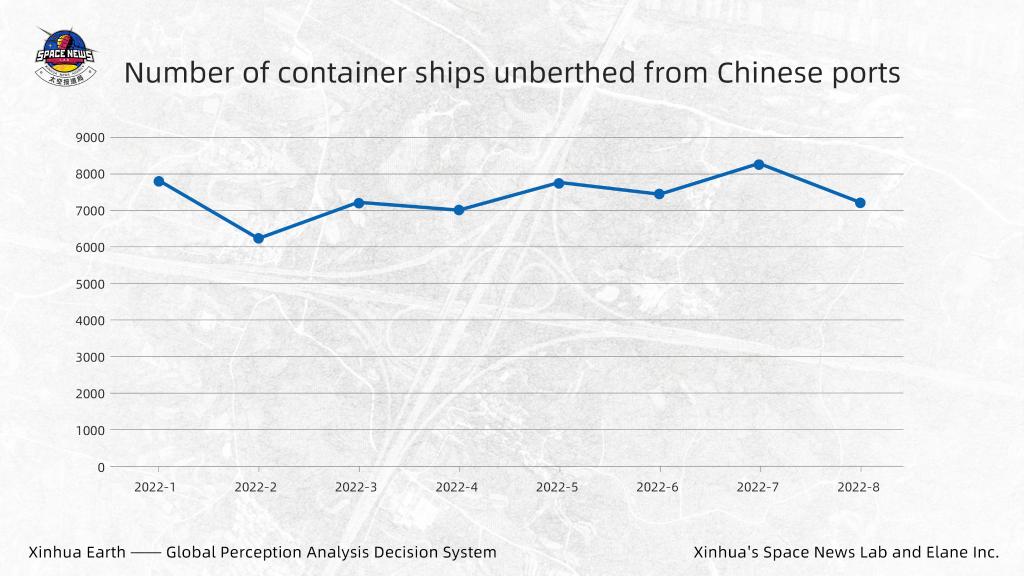
Satellite remote sensing was used to monitor the temperature of key production facilities in 32 factories of 19 major iron and steel enterprises in China. Of the 39 monitored areas, 34 reported roughly the same temperature record as the same period of last year, indicating that no significant production halts have occurred.
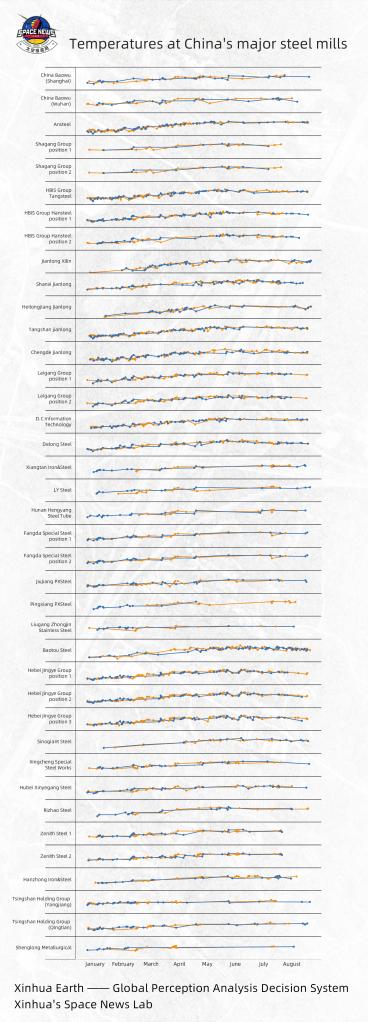

Six major steel mills in China in full operation.
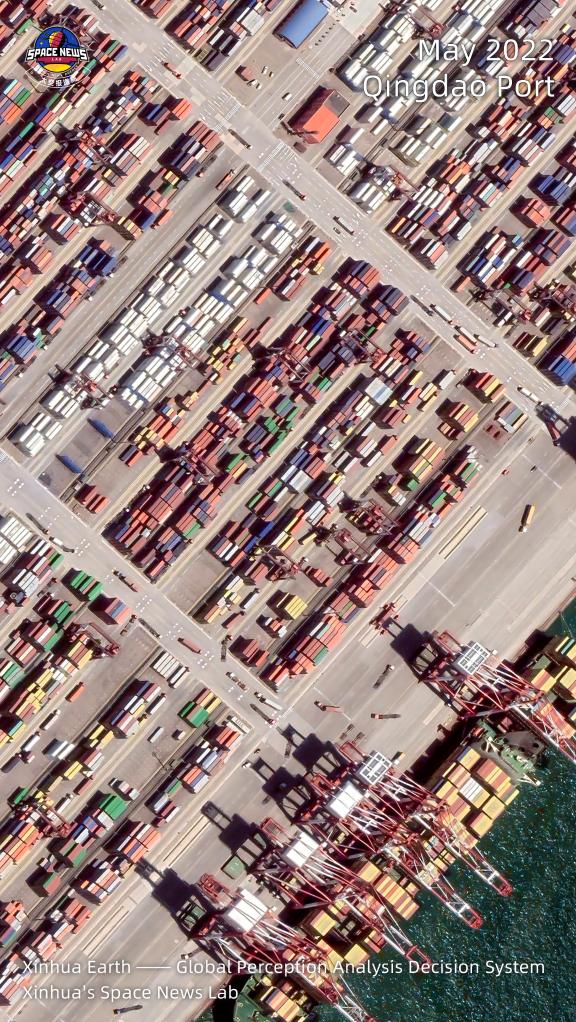
The busy Qingdao Port captured by satellite.
Despite the economic pressure at home and abroad, China's economy has displayed resilience, great potential, and sound fundamentals. ■



